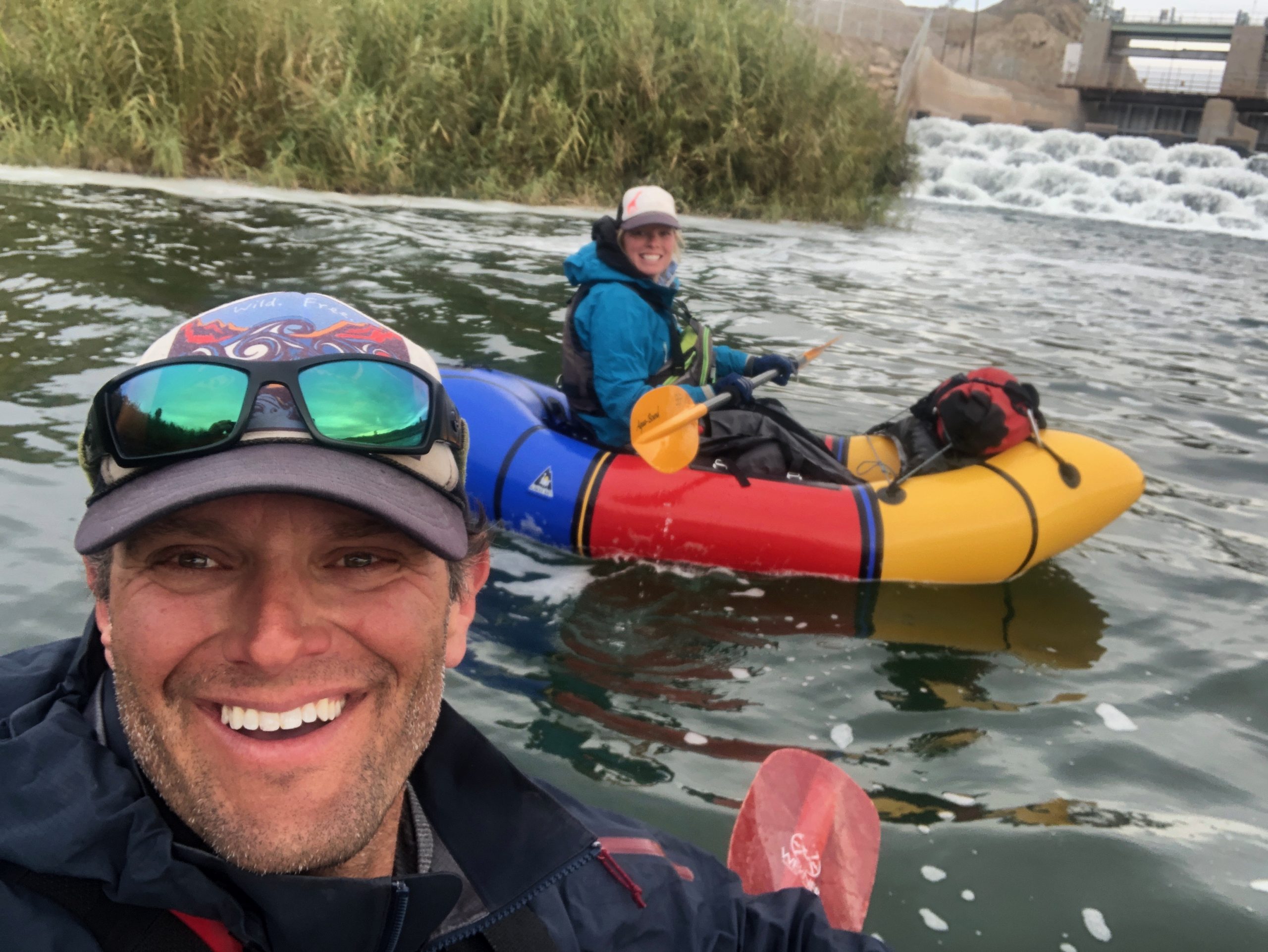Some information may be outdated.
In 2018, Michael and Jenny Fiebig embarked on a six-month, 1800-mile excursion down the entire length of the Green and Colorado rivers via packraft, canoe, and dory. This week, Science Moab talks to Michael, a river conservationist, and Jenny, a mental-health counselor, about their journey. We discuss how the waterway changes along the way, as well as the Fiebigs’ connection to the river and the interviews they conducted with those who live along it.
Science Moab: Why did you decide to conduct interviews with people along the way?
Jenny: One of the objectives of this trip was about reconnection. Mike and I are in midlife, and we used to live out of trucks and be outside a lot more than we do now. We talked about how we could reconnect to ourselves, to each other, to the environment, and to others along the river system. The interviews were a good way to see how people along the whole system are connected to the rivers. We had some interviews planned, and some were organic. It was interesting to get lots of different perspectives, from ranchers way up at the headwaters of the Green River to house boaters or old dory guides. Everyone pretty much cried in the interviews, talking about how deeply they’re connected to the system.
Michael: One question we asked was, “What message would you want to give to people upstream or downstream from here?” It was pretty cool to assess commonalities or differences amongst people from the headwaters to the estuary. The Colorado River has been called the hardest-working river in the world. It’s got a ton of structural water issues. To be able to talk to people, to find what motivates them, what connects them, was a really good opportunity for conservation work, too.
Science Moab: What was your most memorable person or fact?
Jenny: I think one of the most powerful interviews was the houseboat of 12 men on Lake Powell. They were a group of men that had been coming together for the past almost 20 years. It was a men’s therapy group originally; men in our culture tend to have the stereotype of not talking about their feelings, but these guys were open, reading poetry, singing songs about their connection to place and their place in the world.
Michael: It was pretty funny. We were trying to make a lot of miles and it was getting toward dark, and you have a houseboat of 12 guys waving you over in the dark. We’re thinking wow, this is the start of a bad B movie or something; should we really do this conversation? But I’m really glad that we did.
Science Moab: What was it like to traverse the dams?
Michael: There are 11 main dams on the Green-Colorado system. We had this pattern: starting from the upper Green, you’d have a river that had some naturalness: some sinuosity and meander, gravel-bed ecosystems and scouring and sediment movement. Then you’d get to a reservoir and all that would stop. You’d put back in below the dam, and it was like a little aquarium. It was clear and colder; all of the sediment dropped out. It had algae and hemmed-in banks. Slowly, side tributaries would come in, and that naturalness would come back as you went downriver. Then you’d hit the next reservoir, and the pattern would start all over again.
We reached peak naturalness in Cataract Canyon. From Lake Powell down, the river starts to diminish. Most rivers get bigger and wilder down to the floodplain, but the Colorado hits peak right in the middle, and slowly gets smaller and smaller. At the Mexico border, the river wasn’t even wide enough for us to have our dory, and we had to switch to packrafts.
Science Moab: What was your inspiration and goal for the trip?
Michael: I think our main goal was to know the whole river. Jenny and I met on the Green River, and we’ve spent a lot of our free time working on and exploring the Colorado and the Green. We really wanted to know this place from top to bottom, just like you would with anything you love; you want to know every inch of it.
Science Moab is a nonprofit dedicated to engaging community members and visitors with the science happening in Southeast Utah and the Colorado Plateau. To learn more and listen to the rest of Michael and Jenny Fiebig’s interview, visit www.sciencemoab.org/radio. This interview has been edited for clarity.
Appreciate the coverage? Help keep local news alive.
Chip in to support the Moab Sun News.





